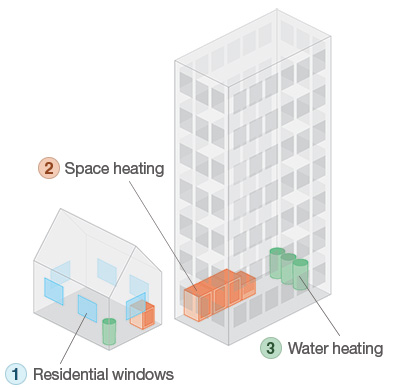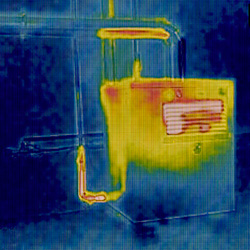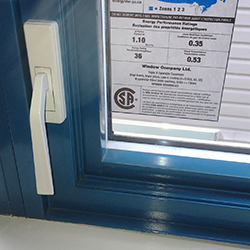A market transformation roadmap for windows, space heating and water heating technologies
Paving the road to a low carbon economy
The 2017 Energy and Mines Ministers' Conference released a series of aspirational goals for energy performance in the building sector. These goals focused on three key areas – windows, space heating and water heating – to reduce greenhouse gas emissions and promote the adoption of clean technology. Governments promised a road map to achieve these goals. That road map has arrived.
Buildings and homes in the low carbon economy
Over the last year, Governments consulted with stakeholders in the building sector to create the road map. Together, we defined a way to bring new technologies to market and encourage their wider adoption, then clarified Governments' and stakeholders' roles and responsibilities in supporting this effort. The resulting joint plan will help establish a more competitive building sector and a cleaner future.
Energy-efficient equipment in the building sector
Energy use in Canadian homes and buildings can be greatly reduced (over 35%) when next-generation window, space heating and water heating technologies are installed.

1. Residential windows
Windows do not consume energy, but are important in determining how much energy is needed to heat and cool a home. Windows can account for up to 35% of heat loss by a home during the heating season.
2. Space heating
Space heating is the largest source of energy consumption in Canada's building sector. It accounts for 64% of energy used in homes and 56% of energy used in commercial buildings.
3. Water heating
Water heating is the second largest source of energy consumption in Canada's building sector. It accounts for 19% of energy used in homes and 8% of energy used in commercial buildings.
The Challenge
Governments need to guide Canada towards a low carbon economy.
The Road Map
Paving the road to a low carbon economy can be achieved when Governments and stakeholders work together. We all have a role. This table shows the key steps in the road map.

| Stakeholder Group | Product Development R&D | Lab and Field Testing R&D | Demonstration | Information & Awareness | Training | Incentives | Codes & Standards |
|---|---|---|---|---|---|---|---|
| NRCan | NRCan has a leading role |
NRCan has a leading role |
NRCan has a leading role |
NRCan has a leading role |
NRCan has a supporting role |
NRCan has a supporting role |
NRCan has a leading role |
| Provincial/Territorial Governments | Provincial and Territorial Governments have a supporting role |
Provincial and Territorial Governments have a supporting role |
Provincial and Territorial Governments have a leading role |
Provincial and Territorial Governments have a leading role |
Provincial and Territorial Governments have no role |
Provincial and Territorial Governments have a leading role |
Provincial and Territorial Governments have a leading role |
| Federal Labs | Federal Labs have a leading role |
Federal Labs have a leading role |
Federal Labs have no role |
Federal Labs have no role |
Federal Labs have no role |
Federal Labs have no role |
Federal Labs have no role |
| Researchers | Researchers have a leading role |
Researchers have a leading role |
Researchers have no role |
Researchers have no role |
Researchers have no role |
Researchers have no role |
Researchers have no role |
| Utilities/Efficiency Orgs | Utilities and Efficiency Organizations have a supporting role |
Utilities and Efficiency Organizations a leading role |
Utilities and Efficiency Organizations have a leading role |
Utilities and Efficiency Organizations have a leading role |
Utilities and Efficiency Organizations have a supporting role |
Utilities and Efficiency Organizations have a leading role |
Utilities and Efficiency Organizations have no role |
| Manufacturers | Manufacturers have a leading role |
Manufacturers have a supporting role |
Manufacturers have a supporting role |
Manufacturers have a supporting role |
Manufacturers have a leading role |
Manufacturers have no role |
Manufacturers have a supporting role |
| Builders/Contractors | Builders and Contractors have no role |
Builders and Contractors have no role |
Builders and Contractors have a supporting role |
Builders and Contractors have a supporting role |
Builders and Contractors have a supporting role |
Builders and Contractors have no role |
Builders and Contractors have no role |
| Industry Orgs | Industry Organizations have a supporting role |
Industry Organizations have no role |
Industry Organizations have a supporting role |
Industry Organizations have a leading role |
Industry Organizations have a leading role |
Industry Organizations have a supporting role |
Industry Organizations have a supporting role |
| Code/Standards Orgs | Codes and Standards Organizations have no role |
Codes and Standards Organizations have no role |
Codes and Standards Organizations have no role |
Codes and Standards Organizations have a leading role |
Codes and Standards Organizations have no role |
Codes and Standards Organizations have no role |
Codes and Standards Organizations have a leading role |
The Steps
There are 7 sequential stepsFootnote * to reach our goals. Each step is contributed to by a different combination of stakeholders.

Product Development R&D
Designing products to improve their performance, lower costs, and make them easier to install and control.

Lab and Field Testing R&D
Simulating the operation of products in a lab or in real-life conditions to assess how well they work.

Demonstration
Demonstrating product performance and solutions to installation challenges.

Information & Awareness
Educating the marketplace on how new technologies work and their benefits, to enable wider adoption.

Training
Ensuring a trained and certified workforce to install and maintain new products.

Incentives
Ensuring that financial and non-financial measures are in place to make high performance products more affordable.

Codes & Standards
Establishing high-performance specifications to drive innovation. Ensuring building codes and standards are harmonized.
Outcomes
- Canadians have access to high-performance technologies that are cost-effective and work in Canada's climate.
- R&D investments properly support emerging building sector technologies.
- Canada develops strong contractor expertise and a stronger manufacturer base to supply, install and maintain new technologies in homes and buildings.
- Canadian manufacturers have new international growth opportunities.
- Canadians use clean energy efficiently.
- Industry has a level playing field across Canada.
Read the full report
The full report is available (PDF, 3.44 MB)
Learn more about regulatory cooperation and market transformation
Page details
- Date modified: